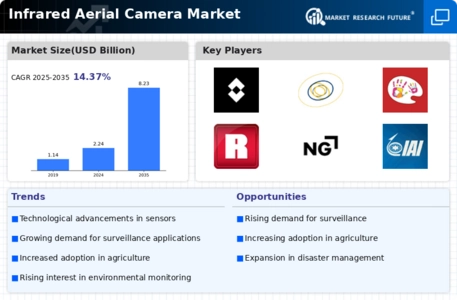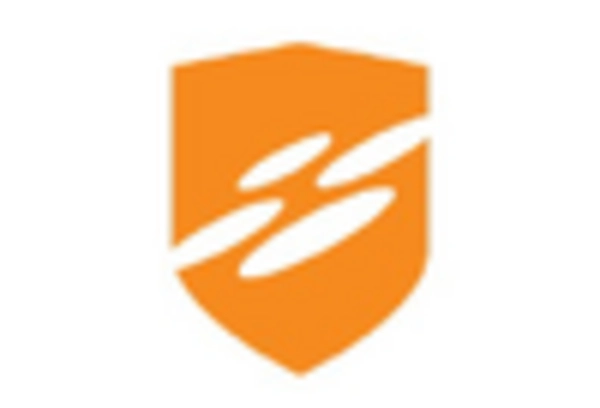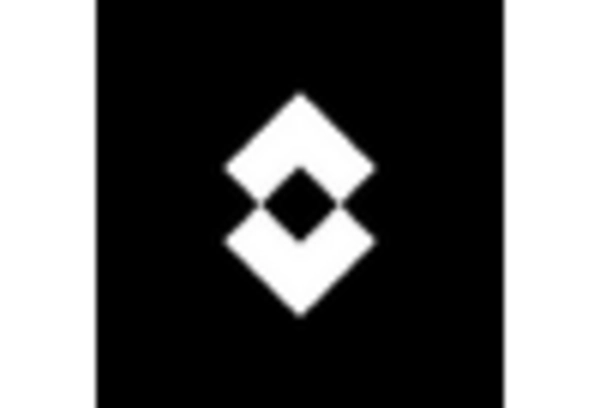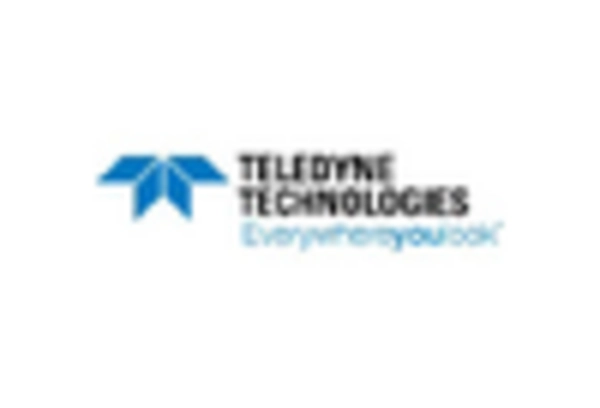Advancements in Imaging Technology
Technological innovations in imaging capabilities are significantly influencing the Infrared Aerial Camera Market. Recent developments in sensor technology, image processing, and data analytics have enhanced the performance of infrared cameras, making them more efficient and effective. The integration of artificial intelligence and machine learning algorithms into these systems has improved their ability to analyze and interpret data, leading to better decision-making. Market data indicates that the imaging technology segment is expected to grow at a compound annual growth rate of around 12% over the next few years. This advancement not only boosts the functionality of infrared aerial cameras but also expands their applications across various industries, including defense, agriculture, and environmental monitoring.
Rising Applications in Agriculture
The agricultural sector is increasingly recognizing the benefits of infrared aerial cameras, which is contributing to the growth of the Infrared Aerial Camera Market. These cameras facilitate precision agriculture by providing farmers with critical data on crop health, soil conditions, and irrigation needs. The ability to monitor large areas efficiently allows for timely interventions, ultimately leading to improved yields and resource management. Market data indicates that the agricultural application segment is anticipated to grow at a rate of around 14% in the coming years. As the demand for sustainable farming practices rises, the integration of infrared technology in agriculture is likely to become more widespread, further driving the expansion of the Infrared Aerial Camera Market.
Focus on Infrastructure Development
The ongoing emphasis on infrastructure development across various regions is likely to bolster the Infrared Aerial Camera Market. Governments and private entities are investing heavily in infrastructure projects, necessitating advanced monitoring solutions to ensure safety and compliance. Infrared aerial cameras are utilized for inspecting bridges, roads, and buildings, providing critical data that aids in maintenance and planning. Market forecasts suggest that the infrastructure sector will experience a growth rate of approximately 11% in the adoption of aerial imaging technologies. This trend indicates a growing recognition of the value of infrared technology in infrastructure management, thereby enhancing the prospects for the Infrared Aerial Camera Market.
Increased Use in Disaster Management
The rising frequency of natural disasters and the need for effective disaster management strategies are driving the Infrared Aerial Camera Market. These cameras play a crucial role in assessing damage, locating victims, and monitoring environmental changes during emergencies. The ability to capture thermal images allows for the identification of hotspots and areas requiring immediate attention. Market analysis suggests that the demand for infrared aerial cameras in disaster response is likely to increase, with projections indicating a growth rate of approximately 10% in this sector. As governments and organizations prioritize disaster preparedness and response, the adoption of infrared technology is expected to expand, enhancing the capabilities of emergency services and contributing to the overall growth of the Infrared Aerial Camera Market.
Growing Demand for Surveillance and Security
The increasing need for enhanced surveillance and security measures across various sectors appears to be a primary driver for the Infrared Aerial Camera Market. Organizations are investing in advanced technologies to monitor critical infrastructures, borders, and public spaces. The market for aerial surveillance is projected to reach substantial figures, with estimates suggesting a growth rate of approximately 15% annually. This trend indicates a rising reliance on infrared aerial cameras for real-time monitoring and threat detection, thereby propelling the market forward. As security concerns escalate, the adoption of infrared technology in aerial surveillance is likely to become more prevalent, further solidifying its role in the Infrared Aerial Camera Market.

















Leave a Comment